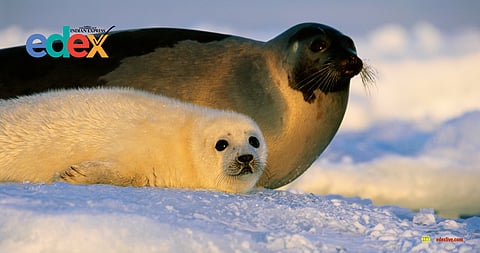

The latest Red List of Threatened Species, released by the International Union for Conservation of Nature (IUCN) at the World Conservation Congress in Abu Dhabi, reveals that over a quarter of the 1,72,620 assessed species, 48,646 in total, are at risk of extinction.
This authoritative global assessment, updated regularly, highlights the escalating biodiversity crisis driven by melting sea ice and deforestation. Jon Paul Rodríguez, chair of IUCN’s Species Survival Commission, described the Red List as a critical indicator, stating, “The Red List records symptoms of extinctions. It’s like a thermometer when you are sick… you’re measuring something that tells you there’s something wrong; we have to act.”
Arctic seals under threat
The report identifies three Arctic seal species, hooded, bearded, and harp seals, as facing heightened extinction risks due to rapidly retreating sea ice caused by global warming, with the Arctic warming four times faster than the global average.
The hooded seal is now listed as endangered, while the bearded and harp seals are near-threatened. These seals rely on sea ice for breeding, resting, and foraging, and its loss threatens not only their survival but also the broader Arctic ecosystem, impacting species like polar bears.
Global bird population decline
A comprehensive reassessment of the world’s birds, conducted over nine years, found that 61% of bird species are in decline globally, up from 44% in 2016, primarily due to habitat loss from agriculture and logging. Regions like Madagascar, West Africa, and Central America face significant risks due to tropical forest loss.
Species such as the black-casqued hornbill in West and Central Africa and Schlegel’s asity, a Madagascar-endemic forest bird now listed as vulnerable, are further threatened by hunting and wildlife trade.
The IUCN World Conservation Congress, held every four years, fosters collaboration among conservation leaders, academics, Indigenous peoples, and decision-makers to address global challenges.
